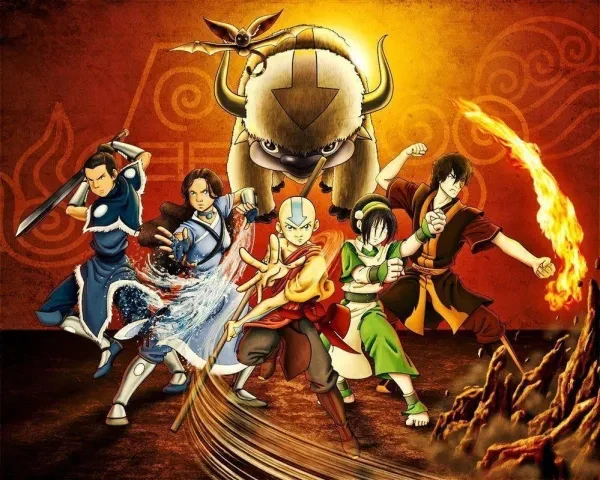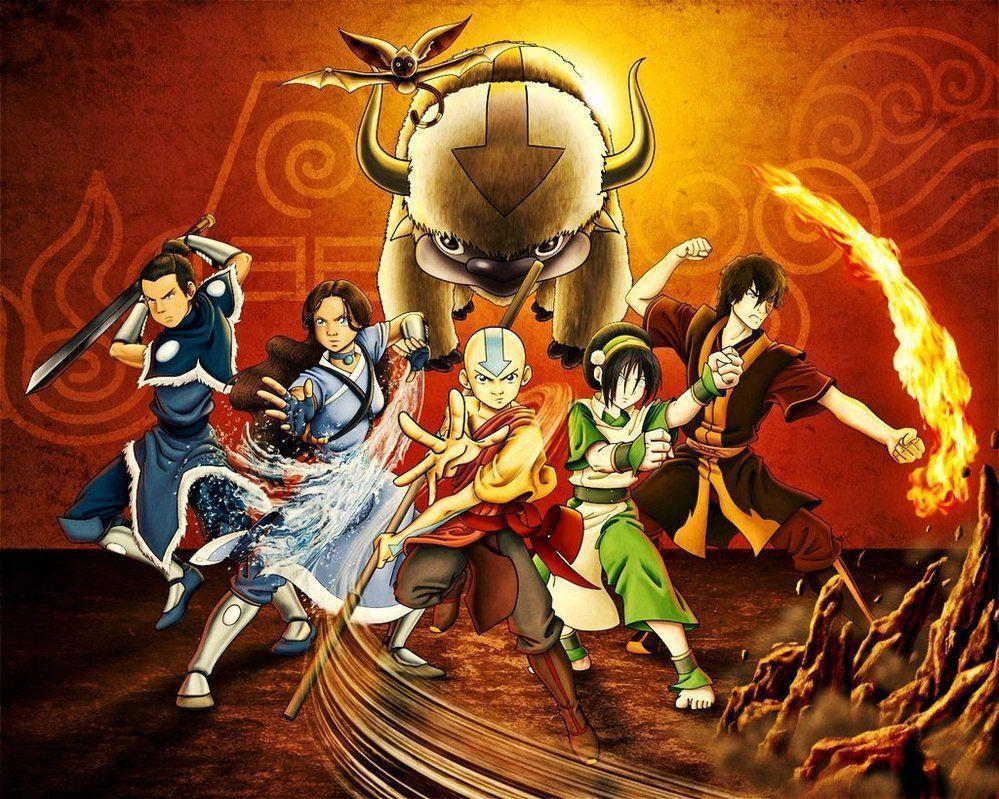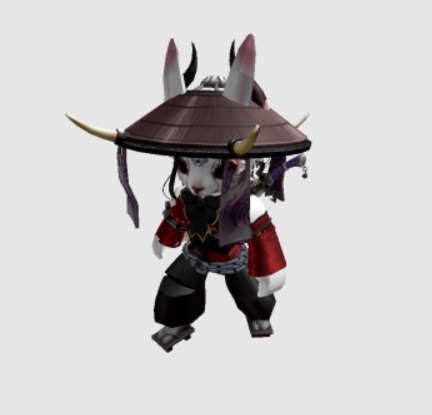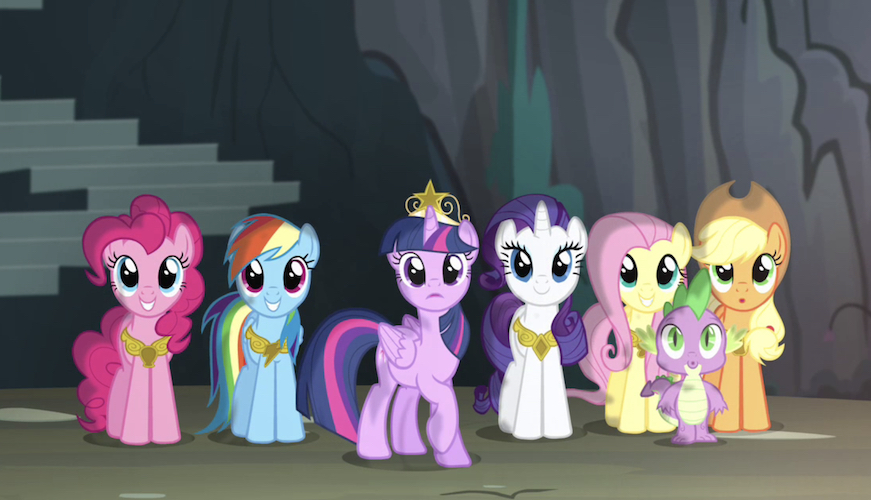
July 19th marked twelve years since Sozin’s Comet entered earth’s orbit in the four-part series finale of Avatar: The Last Airbender. As of this past May, the show is finally available to stream in the United States on Netflix. To celebrate, here are some of the show’s defining moments that are sure to get you hooked all over again.
10. Aang Visits the Southern Air Temple
This time goes...umm, less well—Aang loses control over his emotions and awakens his avatar spirit, nearly blowing down the temple. While the two-part series premiere largely kept things on the light side, Aang’s first meltdown is the first of many times the show throws a devastating emotional punch.
9. Azula’s First Demonstration
In the final seconds of season one, we’re transported to the extremely on-fire chamber of Firelord Ozai, Zuko’s father. Ozai growls a mission to the young woman kneeling before him: her uncle (Iroh) is a traitor, her brother is a failure, and they must be captured. It’s the first time we’re formally introduced to Azula.
She takes center stage in the inaugural episode of season two, “The Avatar State,” when she finds and attempts to capture Zuko and Iroh. The ensuing struggle is one of the best scenes in the series: not only does Azula demonstrate her combat prowess (including our first glimpse of lightningbending), but the psychological warfare she wages against Zuko—and the insidious grin plastered across her face—send a clear message about the show’s newest antagonist: Azula is nasty.
8. Drink Cactus Juice!
With A:TLA’s willingness to explore more serious themes and subjects, it’s easy to forget that the show wasn’t all heavy, all the time. In fact, part of what makes it so great is its knack for striking a balance between serious and fun.
Sokka’s run-in with cactus juice just might be the epitome of that balance. In the midst of one of the Gaang’s most dire situations—lost in the desert with no Appa, no water, and no signs of life for miles—Sokka drinks from a cactus and, well, goes on a trip. Between worming across the desert, dancing like a used-car lot blow-up doll, and swiping at air with his boomerang, Sokka’s experience with the quenchiest drink around is always worth the watch.
7. There is No War in Ba Sing Se
In “City of Walls and Secrets,” the Gaang arrives in Ba Sing Se, the Earth Kingdom’s capital city, hoping to convince the king to join the war against the Fire Nation. The city is well-known across the world as an extravagant and luxurious destination—but the people inside are either unwilling or unable to talk about the war. Team Avatar eventually finds out that the government is brainwashing people into believing that there is no war in order to maintain neutrality.
There’s perhaps no clearer sign of a society barreling toward a dystopian future than one with a government that dictates truth and simply refuses to acknowledge anything to the contrary. Ba Sing Se also uses rings as social dividers, promoting its opulent “upper ring” to distract from the fact that countless people in other areas live in poverty—also generally a faux pas. And so...hmm. To be honest, I can’t think of any reasons why this might be relevant right now. Oh well. Let’s just say this didn’t happen!
6. Katara Freezes the Rain
Immediately upon joining team Avatar, Zuko chaperones each member (except Toph) on a life-changing field trip. “The Southern Raiders,” is Katara’s turn: hoping to provide her with closure about her mother’s killer, Zuko and Katara go on a covert operation to find him and get revenge.
This episode gives us a chilling look at how powerful Katara has become, and the lengths she’s willing to go to for people she cares about. After she used bloodbending for the first time, she broke down in tears; in this episode, she uses it to interrogate a soldier without batting an eye. And when she finally finds the man who took her mother, the girl who once struggled to make a water whip makes the rain stop. Other Katara-centric episodes, like “The Desert,” “The Painted Lady,” and “The Puppet Master,” position Katara as the group’s level-headed conscience. “The Southern Raiders” shows us just how much anger she’s been carrying—and how terrifying it is when she lets it out.
5. The Moon Spirit
Team Avatar knew how to end a season on a high note, and their first finale is no exception. “The Siege of the North” sees the Fire Nation invade the Water Tribe’s northern faction as Aang roams the spirit world. Knowing that the moon enhances waterbending, Admiral Zhao kills the moon spirit’s physical form, a koi fish, to permanently weaken the water tribe.
The moon spirit’s death is one of the first major turning points in the series: Iroh, after attacking Zhao, is set to be imprisoned alongside Zuko, setting the pair on their independent path. Aang, meanwhile, is permanently scarred by the destruction he caused in the Avatar state, and his reluctance to tap into it looms throughout the series. We also witness one of the first major tragedies in the series as Princess Yue, the northern tribe chief’s daughter, is forced to sacrifice herself by returning the life force she borrowed from the moon at birth, and becomes the new moon spirit.
4. The Storm
Not a singular moment, technically, but “The Storm” is best taken as a whole rather than by its components. The twelfth episode of season one provides a history lesson on both Zuko and Aang. For Aang, that means watching how his life changed when he found out he was the Avatar, and coming to terms with his fate now; Iroh, meanwhile tells us how Zuko got his scar, and why he’s so hellbent on capturing Aang.
A:TLA emerged from the ice as a good show. At times, though, the beginning wobbled—”The Divide,” which immediately precedes “The Storm,” is almost certainly the worst episode in the series (and one of only two actively bad episodes—the other is “Avatar Day”). In “The Storm,” the show finally settles in, establishing both Zuko and Aang as deep and complex characters and setting up the show-defining dynamic between them. It’s the first truly excellent episode in the series.
3. Zuko’s Crossroads
From almost the onset of the series, A:TLA teased Zuko’s eventual turn toward good. Between exploring his past through flashbacks and fleshing out his own cognitive dissonance between what he wanted for himself vs. what others wanted from him, it was always a question of when, not if, Zuko would start on that path.
Never did that inevitably feel closer than in “The Crossroads of Destiny,” the finale of season two. Previous episodes saw Zuko release Appa from underneath Lake Laogai, renounce his alter-ego as the Blue Spirit, and fight a sickness that Iroh believed sprouted from his internal conflict. The connection he forged with Katara in “Crossroads” seemed to solidify that turn; instead, he attacks Aang, nearly killing him. Zuko’s betrayal not only temporarily sidelines Aang, but it’s almost enough to sever his relationship with Katara entirely.
2. Leaves from the Vine
After arriving in Ba Sing Se, the Gaang attempts to secure a meeting with the Earth King and convince him to join the war against the Fire Nation. Unfortunately, not even the Avatar can defeat the plodding process of bureaucracy, and the Gaang is given a month to kill before their meeting. “The Tales of Ba Sing Se” explores how each character spends that time in the form of several character-focused shorts, or “tales”.
Truthfully, every one of the tales is excellent—particularly Zuko’s date with Jin, a brief and bittersweet taste of what a normal life could have been—but none more perfectly captures its subject than Iroh’s. It starts with Iroh buying a flower for “a special occasion,” and follows him as he makes small differences throughout the day—pacifying a crying child by singing a nursery rhyme, teaching kids about the value of honesty (and the value of not getting beaten down), even teaching a mugger better technique. It all culminates here: a tearful remembrance underneath a shimmering sunset for Lu Ten, Iroh’s son, killed in the war. “If only I could have helped you,” he laments, before singing the same nursery rhyme that earlier calmed the child. It’s one of the high points of the series, and over a decade later, it still carries the same weight.
1. The Zuko-Azula Agni Kai
In “Sozin’s Comet,” the four-part finale of A:TLA, the series sticks a near-perfect landing. Each and every character gets their moment to shine, and storylines three seasons in the making finally come to a head. And while Aang’s ultimate showdown with Firelord Ozai is praiseworthy in its own right, the time we’ve spent with the Fire Nation Prince and Princess make for a much more intimate battle.
I mean...where do you even begin? It’s visually stunning; towers of blue and red flames clash together, and the siblings demonstrate firebending techniques that are equal parts beautiful and devastating. The brooding orchestral-string soundtrack reminds us that what is happening is deeply, deeply tragic as the fire itself bellows with the force and ferocity of two people desperately trying to destroy each other. Most importantly, the duel illustrates Zuko’s transformation: he’s rid himself of the angst and rage that once plagued him—and has infected his sister—and when the time comes, he sacrifices himself to save a former enemy, thereby accepting Katara’s help in finishing the fight. It’s the final stop in one of the finest character arcs we’ve ever seen.
Also be sure to read:
[Top 5] Avatar: The Last Airbender Best Avatars
[Top 10] Avatar: The Last Airbender Best Episodes Worth Watching Again
[Top 10] Avatar: The Last Airbender Best Moments Worth Watching Again




